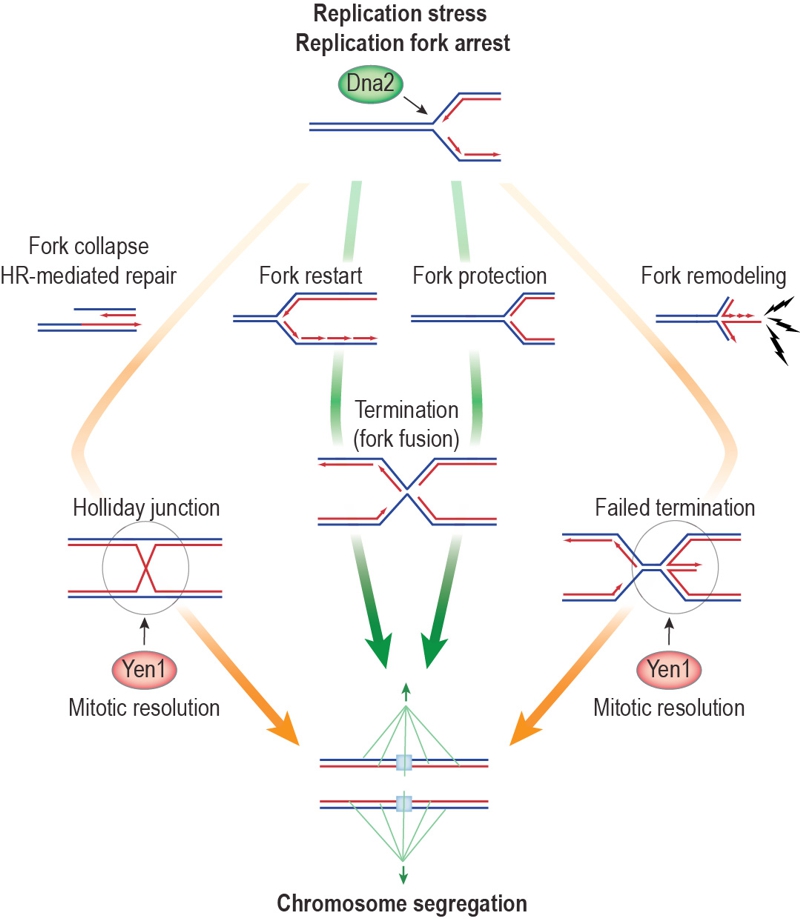Back to article: A new role for Holliday junction resolvase Yen1 in processing DNA replication intermediates exposes Dna2 as an accessory replicative helicase
FIGURE 1: Dna2 helicase activity promotes the recovery of stalled DNA replication intermediates.
Dna2 acts as an accessory replicative helicase, suppressing toxic replication intermediates and chromosome non-disjunction after RF arrest. This suggests that the Dna2 helicase activity facilitates fork restart or fork protection (green arrows), promoting full genome replication and/or fork fusion during replication termination. Arrested RFs that escape the attention of Dna2 may collapse, triggering HR-mediated restart. Alternatively, unscheduled fork remodeling may occur with the resulting chicken foot structure constituting a potential source for DNA damage checkpoint signaling (lightning bolts) in Dna2 helicase-defective cells, and a possible obstruction to replication termination. These pathways (orange arrows) lead to chromosome entanglements that are resolved by Yen1 in anaphase, ensuring viable chromosome segregation.

